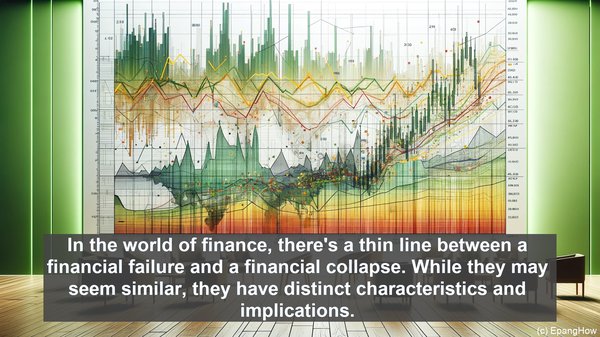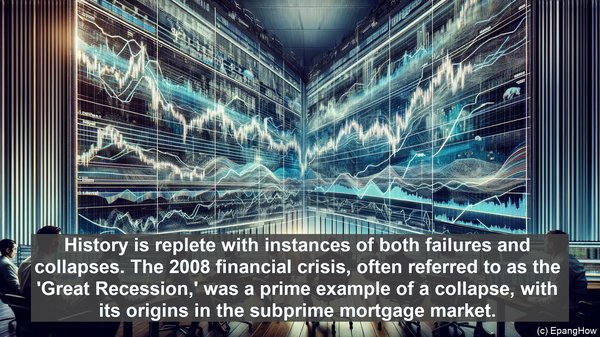Introduction: The Thin Line
Hello everyone! Welcome to today’s video. In the world of finance, there’s a thin line between a financial failure and a financial collapse. While they may seem similar, they have distinct characteristics and implications. Let’s dive deeper!

Financial Failure: A Setback
A financial failure typically refers to a situation where an individual, organization, or even a government fails to meet their financial obligations. It could be due to various reasons like mismanagement, market downturns, or unexpected events. While a failure is undoubtedly a setback, it doesn’t necessarily lead to a widespread crisis.

Financial Collapse: The Domino Effect
On the other hand, a financial collapse is a more severe scenario. It’s often characterized by a rapid and widespread loss of value in financial assets, leading to a breakdown of the entire financial system. Collapses can be triggered by factors like speculative bubbles, systemic risks, or even geopolitical events. The consequences of a collapse can be far-reaching, affecting not just the financial sector but also the real economy.
Timing and Scale: Differentiating Factors
Another key distinction lies in the timing and scale. A financial failure is usually a localized event, impacting a specific entity or a limited set of stakeholders. In contrast, a collapse has a more systemic nature, with repercussions felt across the board. Additionally, while a failure can occur relatively quickly, a collapse often builds up over time, with warning signs becoming evident.
Response and Recovery: Divergent Paths
When it comes to response and recovery, the approaches differ. In the case of a failure, there’s often room for corrective measures, such as restructuring, refinancing, or even government intervention. However, in a collapse, the challenges are more complex, and the recovery process can be prolonged, requiring significant interventions at various levels.
Lessons Learned: Historical Examples
History is replete with instances of both failures and collapses. The 2008 financial crisis, often referred to as the ‘Great Recession,’ was a prime example of a collapse, with its origins in the subprime mortgage market. On the other hand, the bankruptcy of a single company, like Enron in 2001, can be seen as a failure. Studying these cases provides valuable insights into the dynamics and aftermath of such events.
